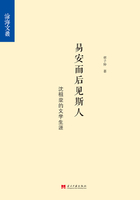The Devil's Tears: An Introduction
On the afternoon of December 16, 2001, a black U.S. Air Force C-17 transport plane begins its descent over the Central Asian plains. Aboard the plane is fifty-year-old General Christopher Kelly. His mission: to set up an American airbase in the small republic of Kyrgyzstan, the first U.S. troops to be stationed on a combat mission on the territory of the former Soviet Union. Their enemies are the Taliban and the remnants of the Al Qaeda terror network in Afghanistan, more than six hundred miles to the south in the Afghan mountains.
At exactly 3:32 P.M. local time, the C-17 touches down at the civilian airport of Manas, near the Kyrgyz capital of Bishkek. Two days earlier, the worst blizzard in decades raged across Kyrgyzstan. Airport workers toiled through the night with shovels to clear the landing strip. "Who would have thought during the Cold War that I would ever reach this place?" Kelly quips as he peers out at giant mounds of snow. He has served in the Air Force for twenty-eight years. In a matter of weeks, a base for three thousand troops is to be established at the airport. "This is combat, this is the real deal," Kelly says.
General Kelly is a product of a new American alliance with a former Soviet republic, a partnership that was unthinkable only a few years earlier. The terror attacks of September 11, 2001 and the U.S. campaign in Afghanistan have pushed Central Asia, a region that had been as obscure as the Balkans ten years ago, to the forefront of world attention. The vast territories between the eastern shores of the Black Sea and the peaks of the Pamir Range were long known as the "black hole of the world." For more than seventy years of Soviet rule, the region around the Caspian Sea (the world's largest inland lake) was isolated from the West, virtually inaccessible to foreigners.
After the Soviet Union's collapse in 1992, eight republics in the Caucasus and Central Asia—Georgia, Armenia, Azerbaijan, Kazakhstan, Kyrgyzstan, Uzbekistan, Turkmenistan, and Tajikistan—obtained formal independence, opening their borders to their southern neighbors and to China in the east. The goal was to establish new political and economic relations to smooth the transition to capitalism.
Instead, almost all the ex-Soviet republics in the Caspian Sea region are still ruled by former communists and KGB generals who reluctantly adopted nationalistic rhetoric to retain dictatorial control over states still in search of their national identities. Most of the republics were created by Joseph Stalin, who paid no attention to each area's population mix—a legacy that continues to fuel conflict between the many ethnic groups of the region. At the same time, the new nominally independent states are striving to free themselves from Moscow's hegemonic grip, looking for new allies.
The war against Al Qaeda focused international attention on the Caspian region as an area of strategic importance. However, the Afghan campaign is only an episode, albeit an important one, in a much larger struggle: the "New Great Game." Coined in the early 1990s, the term describes an odd rerun of the first "Great Game" in the nineteenth century. As immortalized in Rudyard Kipling's novel Kim, the British Empire and Tsarist Russia were fighting then for supremacy in Central Asia.[1]
When the Tsarist armies conquered the Caucasus and subjugated the nomadic peoples of Turkestan, London and Calcutta saw this as a threat to the British Crown Colony of India. In turn, the Russian government in St. Petersburg feared that the British might incite the Muslim tribes of Central Asia to rebel against Russia.
The two empires jousted for control of Afghanistan, whose central location offered the most strategically viable base for an invasion of India or Turkestan. Lord George Nathaniel Curzon, viceroy of India in 1898, clearly knew what was at stake for the British in the Great Game: "Turkestan, Afghanistan, Transcaspia, Persia—to many these names breathe only a sense of utter remoteness or a memory of strange vicissitudes and of moribund romance. To me, I confess, they are the pieces on a chessboard upon which is being played out a game for the dominion of the world."[2]
Now, more than a hundred years later, great empires once again position themselves to control the heart of the Eurasian land-mass, left in a post-Soviet power vacuum. Today there are different actors and the rules of the neocolonial game are far more complex than those of a century ago: The United States has taken over the leading role from the British. Along with the ever-present Russians, new regional powers such as China, Iran, Turkey, and Pakistan have entered the arena, and transnational corporations (whose budgets far exceed those of many Central Asian countries) are also pursuing their own interests and strategies.
The greatest difference in today's Great Game are the spoils. While in the Victorian-era struggle, London and St. Petersburg competed over access to the riches of India, the new Great Game focuses on the Caspian energy reserves, principally oil and gas. On its shores, and at the bottom of the Caspian Sea, lie the world's biggest untapped fossil fuel resources. Estimates range from 50 to 110 billion barrels of oil, and from 170 to 463 trillion cubic feet of natural gas. The U.S. Department of Energy comfortably assumes a 50 percent probability of a total of 243 billion barrels of oil reserves. Azerbaijan and Kazakhstan alone could sit on more than 130 billion barrels of oil, more than three times the United States' own reserves. Only Saudi Arabia, with 262 billion barrels, can claim greater resources. As recently as the summer of 2000, the giant Kashagan oil field was discovered off the Kazakh coast, believed to rank among the five largest fields on earth.[3]
People have known that there was oil and gas around the Caspian Sea for centuries. As early as the Middle Ages, members of the Zoroastrian sect went on pilgrimages to the Apsheron peninsula in today's Azerbaijan to pray near gas-fed flames, worshipped as "Holy Fire," that burst forth from its soil even today. At present, transnational energy corporations, littoral states, and world powers vie for the same holy fire, desperately searching for alternatives to the Persian Gulf, which still holds two-thirds of the world's oil reserves.
In industrialized countries' energy ministries, what would be the last oil rush in world history has evoked a sense of euphoria. Democratic governments are courting corrupt Caspian potentates, while transnational companies have signed lucrative contracts and invested more than 30 billion dollars in new production facilities. A further hundred billion dollars has already been earmarked for additional investments. As post-communist Russia and the state-owned Saudi oil fields offer few opportunities for joint ventures, the Caspian boom is proving to be a blessing for the oil corporations.
The British and Russian officers of the nineteenth century who encountered each other along the old Silk Road, often disguised as explorers and cartographers, have been replaced by a new brand of adventurers: geologists and oil engineers. And yet, the "Tournament of Shadows," as Tsarist foreign minister Count Karl Robert Nesselrode once called the Great Game, is played out not by courageous individuals, but by large corporations, bureaucracies, and military forces.
"I cannot think of a time when we have had a region emerge as suddenly to become as strategically significant as the Caspian," declared Dick Cheney in a speech to oil industrialists in Washington, D.C. in 1998, when he was still CEO of the oil supply corporation Halliburton.[4]
Today, Vice President Cheney is one of the most influential men in the coterie of President George W. Bush, himself a Texan oil magnate who wrote in his 1999 autobiography, "I am fascinated with the oil industry. All my friends have in one way or the other been involved in the oil industry."
Immediately after taking office, the Bush administration made oil politics a new priority in the United States, where 4 percent of the world's population consumes more than one-fourth of all energy. In May 2001, Cheney presented the National Energy Policy report, which addressed the issue of how to secure America's energy demands in the next twenty-five years. For the report, Cheney had met with American business leaders behind closed doors, with the Bush administration classifying the participants' identities and the minutes of the talks, a measure normally taken only if national security is at stake.
The report's official authors, members of a commission that included Secretary of State Colin Powell, recommended that "the President make energy security a priority of our trade and foreign policy." While acknowledging that the Middle East oil producers will remain central to world oil security and that the Gulf will be a primary focus of U.S. international energy policy, the report added that "our engagement will be global, spotlighting existing and emerging regions that will have a major impact on the global energy balance." The Caspian Basin was singled out as a "rapidly growing new area of supply," and the report advocated a deepened "commercial dialogue with Kazakhstan, Azerbaijan and other Caspian states to provide a strong, transparent and stable business climate for energy and related infrastructure projects."[5]
To be sure, contrary to initial expectations, there is less oil in the Caspian than in the Persian Gulf region. With a maximum oil production of six million barrels per day, by 2015 the Caspian region could reach a share of 5 to 8 percent of the world market, roughly equal to that of the North Sea. Most of the world's oil supply will continue to come from the Middle East, and yet that is precisely why the Caspian has become so important in the United States' effort to wean itself off its dependence on the Arab-dominated OPEC cartel, which, since the oil crisis in 1973, has used its near-monopoly position as a pawn and leverage against industrialized countries.
The hazards of Gulf oil dependency became all the more compelling in August 1990, when Iraqi dictator Saddam Hussein invaded Kuwait, giving him temporary control of one-fifth of the world's oil reserves. Only after an enormous military and financial effort did a U.S.–led international coalition expel Iraqi troops from Kuwait, and ever since then American troops have been stationed in the unstable Gulf region, with the U.S. Navy's Fifth Fleet patrolling the Strait of Hormuz, the world economy's Achilles' heel. The cost of this permanent military presence, which has effectively turned Arabic mini-states such as Kuwait into American protectorates, is estimated at about $50 billion a year. The Bush administration's 2003 invasion of Iraq to remove the Hussein regime and the threat it allegedly posed to the oil-rich region cost the American taxpayers an additional $80 billion.
These efforts reflect American strategic interests in the Middle East, which is the largest oil supplier to the United States, followed by Canada, Venezuela, and Mexico. The Gulf region provides about one-fifth of the eleven million barrels of crude the United States imports every day and which roughly meet half the country's total energy needs. As America's own crude production is going to drop by an estimated 12 percent over the next decade, though, imports will have to provide for two-thirds of the total energy demand by 2020. Additionally, the economic boom in such countries as China and India is likely to cause global oil consumption to surge from today's seventy-three million barrels per day to ninety million barrels by 2020, according to the International Energy Agency. As many oil wells outside the Middle East are nearing depletion, OPEC will expand its share of the world market to more than 60 percent.
This will increase the political clout of the Saudi oil sheikhs in particular, whose possession of one-fourth of the world's reserves puts them in a unique position to dictate prices to the West. Saudi Arabia is the only country in the world capable of acting as a so-called swing supplier. To compensate for production losses such as those caused by the recurrent political crises in Venezuela, the Saudis are able, in a matter of weeks, to boost production from eight to 10.5 million barrels per day. Alternatively, they could choose not to act at all if a price hike is in their interest.
Many people in Washington are far from comfortable with the Saudi power. The desert kingdom is increasingly perceived as an embarrassing and potentially dangerous ally, even more so since September 11, 2001, when nearly all the plane hijackers were Saudis. There is a growing risk that radical Islamist groups could topple the corrupt Saud dynasty. Inspired by Osama bin Laden, who has accused the U.S. troops stationed on Saudi soil since the Gulf War of 1991 of the "greatest theft in history" for allegedly keeping oil prices artificially low, those radical groups could stop the flow of oil to Western "infidels." The so-called petrol riots in Britain in the autumn of 2000, when tens of thousands descended into the streets to show their fury at fuel shortages, were an ugly preview of the chaos such an interruption of oil deliveries would cause.
Yet even without an anti-Western revolution such as the one in Iran in 1979—when 4.3 million barrels of crude disappeared from the world market overnight—Saudi oil is already, as it were, ideologically contaminated. In its efforts to stave off political turmoil, the corrupt regime in Riyadh funds the powerful radical Wahhabi sect that backed the Afghan Taliban and foments terror against Americans around the world.
In a bid to decrease its dependence on the Saudi oil sheikhs, the United States has for years pursued a policy of "diversifying energy supplies." This strategy seeks to secure and control oil resources lying outside the unstable Middle East. Bill Richardson, secretary of energy under President Clinton, described how the Caspian region fits into this strategy. "This is about America's energy security, which depends on diversifying our sources of oil and gas worldwide. It's also about preventing strategic inroads by those who don't share our values. We're trying to move these newly independent countries toward the West. We would like to see them reliant on Western commercial and political interests rather than going another way. We've made a substantial political investment in the Caspian, and it's very important to us that both the pipeline map and the politics come out right."[6]
The "pipeline map" Richardson referred to is one of the most controversial elements of the new Great Game, and over the past ten years has led to conflict and war in the Caucasus and throughout Central Asia—with no end in sight. The Caspian Sea is entirely landlocked. From the oil wells, it is a journey of nearly a thousand miles to the nearest high sea ports where tankers could ship the crude to market. Pipelines, umbilical cords for the industrialized world, need to be constructed. But which route should the pipelines take?
Under communist rule, when a Soviet republic's infrastructure was directed entirely toward Moscow, almost all pipelines were built northward across Russian territory. Today, Russia insists that new pipelines follow the same routes. In a strategic bid to strengthen the new republics' independence from Moscow, the United States is instead attempting to keep the precious oil beyond Russian grasp, while at the same time trying to thwart plans for a pipeline leading south through Iran. To achieve both, Washington in the mid-1990s supported plans by the U.S. energy corporation Unocal to build a pipeline from Turkmenistan through Taliban-controlled Afghanistan. Additionally, the United States has championed a new gigantic pipeline project from Azerbaijan's capital of Baku across the Southern Caucasus to Turkey's Mediterranean port of Ceyhan.
The U.S.–led Afghan campaign has fundamentally altered the geostrategic power equations in Central Asia, which has become the new focus of American foreign policy. This raises a fundamental question: Is there a link between the quest for Caspian oil and the war on terror in Central Asia?
While Washington's military presence in Afghanistan appears to be primarily targeted against international terrorism, it would be na?ve to assume that American decision makers are not also pursuing other strategic interests in Central Asia. As early as 1997, President Clinton's Assistant Secretary of State Strobe Talbott argued that were the Caspian region to fall into the hands of religious or political extremists, it "would matter profoundly to the US if that were to happen in an area that sits on as much as two hundred billion barrels of oil."[7] While the Caspian energy resources may not be the casus belli, they certainly could be the big price in the war on terror, which the Bush administration now uses to dramatically extend American influence in Central Asia.
In my work as a journalist, I have long tried to examine how the struggle for raw materials can lead to conflicts and wars. I first investigated this fatal causality in West Africa, in the diamond mines of Sierra Leone as well as in the Nigerian oil fields. The bitter confrontation between the energy giant Shell and the Nigerian tribes about the Niger delta's oil made it clear to me why fossil wealth is often more of a curse than a blessing for a country and its people.
This book is the result of many research trips and interviews in the countries of the Caspian region, the Caucasus, and Central Asia. In exploring the various front lines of the new Great Game, I tracked down its players, observers, and victims. Meeting with oil executives, warlords, diplomats, refugees, oil workers, politicians, agents, and generals, I traveled for thousands of miles from the Caucasus peaks across the Central Asian plains down to the Afghan Hindu Kush and to Kashmir.
My journey began in Baku, the capital of Azerbaijan, which is both the center of the Caspian oil boom and the starting point for a U.S.–backed giant pipeline to the Turkish Mediterranean coast. I followed its projected course across the war-torn country of Georgia, where Western investors face rampant corruption and the constant threat of Russian military attacks. After an excursion by UN helicopter to the secessionist Caucasus republic of Abkhazia, I crossed the Caucasus mountains to reach Chechnya, where pipelines also play a role in the terrible war between Russian forces and Chechen rebels.
Following a brief return to Baku for a dramatic turn of events, I flew to Kazakhstan, the new "Wild East Oil Dorado," where massive corruption scandals involving American energy corporations mar the world's greatest oil discoveries in three decades. From there, I visited the Muslim Uighur people in Xinjiang, the western-most province of China, which, by aggressively pursuing pipeline plans to transport Kazakh oil to Shanghai, is turning out to be one of the United States' main Great Game rivals. The other is Iran, part of George W. Bush's "axis of evil," whose oil bosses told me in Tehran of their plans to thwart the American pipeline plans by offering Iran's oil network to the Caspian states.
After a nocturnal boat trip across the Caspian waters I then reached Turkmenistan, one of the world's most isolated countries, whose eccentric dictator erects golden statues of himself while trying to play Americans and Russians against each other. Venturing deeper into Central Asia, I traveled to Uzbekistan, Washington's new and despotically ruled ally, to witness the arrival of thousands of U.S. antiterror troops, now stationed within a day's march of the Caspian oil riches.
After a visit to U.S. troops at another new base in Kyrgyzstan and to their potential adversaries, Russian troops in neighboring Tajikistan, I traveled to post-Taliban Afghanistan, the latest Great Game battlefield. There, I met with warlords, government members, and American officers to investigate new plans to construct a pipeline through U.S.-controlled territory. My long journey ended in Pakistan, the cradle of terrorism and the driving force behind the Afghan pipeline deal, where I tracked down Islamic militants who threaten to bring the American presence in the region to a violent end.
All the different countries and people in this story have a small part to play in the new Great Game. The actors may have changed since Kipling's time but its culmination in war and death remains the same, and the victims are nearly always innocent civilians. They know why oil is called "the Devil's tears."















